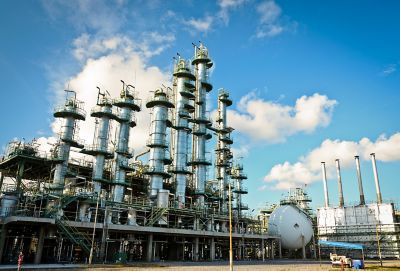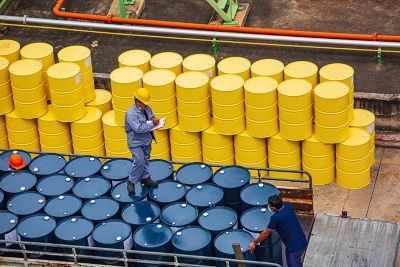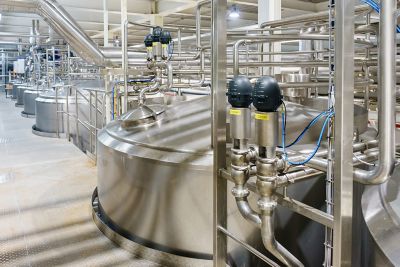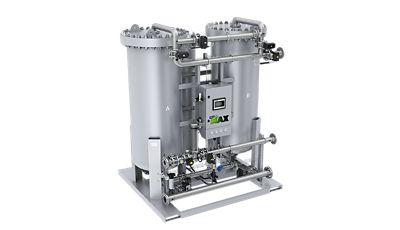Within the intricate science of chemistry, compounds transform and reactions unfurl, and maintaining the integrity of substances is paramount. The chemical industry, a cornerstone of modern society, produces a vast array of materials and products that touch every facet of our lives. Amidst this complexity, a crucial ally emerges – nitrogen generators, wielding the power of nitrogen blanketing to shield sensitive substances from degradation and ensure their pristine state. In this exploration, we delve into the pivotal role of nitrogen generators in the chemical market, unraveling the science behind nitrogen blanketing and its transformative impact on safeguarding product quality and enhancing process efficiency.
In this blog we'll cover:
- Chemical Reactions: Challenges and Solutions
- Nitrogen Generators as Product Shields
- Nitrogen Blanketing
- Applications and Benefits of Nitrogen Blanketing
- Chemical Reactions
- Solvent Storage
- Powder Handling
- Tank Storage
- Product Transportation
- Hazardous Materials
- Shelf Life Extention
- Sustainability
In the realm of chemical manufacturing, precise control over reactions and the quality of products is essential. However, the delicate dance of molecules can be easily disrupted by external factors, leading to degradation, contamination, and altered properties. Oxidation, one of the most common and troublesome culprits, occurs when substances react with oxygen in the air. This reaction can result in color changes, altered textures, and reduced efficacy of the end product.
Enter nitrogen, a gaseous ally that stands as an inert and noble presence in the chemical world. Nitrogen has the unique ability to displace oxygen, creating an oxygen-free environment that prevents unwanted reactions and preserves the original characteristics of substances. Nitrogen blanketing, a technique harnessed with the aid of nitrogen generators, acts as a protective shield, revolutionizing how the chemical industry safeguards its creations.

Nitrogen generators are ingenious devices that extract nitrogen gas from the surrounding air, purifying it to a high degree of purity before delivering it to the target environment. In the chemical industry, these generators serve as guardians, providing a constant and controlled flow of nitrogen to create a blanket that shields substances from the harmful effects of oxygen exposure.
The process of nitrogen generation typically involves pressure swing adsorption (PSA) or membrane separation technology. PSA generators utilize adsorption properties to separate nitrogen from other gases, while membrane generators employ semi-permeable membranes that selectively allow nitrogen to pass through.
The concept of nitrogen blanketing is elegantly simple, yet its impact is profound. By introducing a layer of nitrogen gas over a substance or within a container, the oxygen concentration is drastically reduced. This oxygen-deprived environment curbs oxidation reactions, effectively preventing the degradation and alteration of substances.
In storage tanks, for instance, nitrogen blanketing creates a barrier between the stored material and the atmosphere, minimizing contact with oxygen. As substances are drawn from the tank, nitrogen replenishes the void, maintaining the protective shield. Similarly, during chemical reactions that are sensitive to oxygen, nitrogen blanketing ensures that the reaction takes place in an environment free from the unwanted influence of oxygen molecules.
The applications of nitrogen blanketing in the chemical industry are diverse and far-reaching, encompassing various processes, storage, and transport:
- Chemical Reactions: Nitrogen blanketing is a fundamental technique in controlling and optimizing chemical reactions. It ensures that reactions proceed smoothly, without interference from oxygen-induced side reactions.
- Solvent Storage: Solvents, essential components in many chemical processes, are vulnerable to contamination and degradation when exposed to oxygen. Nitrogen blanketing preserves the purity and efficacy of solvents, contributing to consistent process outcomes.
- Powder Handling: In industries dealing with powdered substances, nitrogen blanketing prevents the absorption of moisture and the formation of clumps, maintaining the free-flowing nature of the powders.
- Tank Storage: For chemicals stored in tanks, nitrogen blanketing prevents evaporation, oxidation, and contamination, ensuring that the stored substances remain unaltered and ready for use.
- Product Transportation: Nitrogen blanketing is employed during the transportation of chemicals to prevent their exposure to oxygen and maintain their original quality upon arrival.
- Hazardous Materials: In situations where chemicals are hazardous or reactive in the presence of oxygen, nitrogen blanketing enhances safety by minimizing the risk of unwanted reactions.
- Shelf Life Extension: In the realm of chemical products, such as paints, coatings, and adhesives, nitrogen blanketing extends shelf life by preventing reactions that could lead to reduced effectiveness or altered properties.

Beyond its immediate benefits, nitrogen blanketing aligns with the principles of sustainability and efficiency that drive the modern chemical industry. By minimizing waste, reducing the need for chemical additives, and preserving the original state of substances, nitrogen blanketing contributes to environmentally conscious practices.
Moreover, the use of nitrogen generators ensures a consistent and reliable nitrogen supply, eliminating the dependence on external sources such as nitrogen cylinders. This autonomy translates to improved process efficiency and reduced operational costs.
In the ever-evolving landscape of chemical manufacturing, where precision and purity define success, nitrogen blanketing emerges as a sentinel of excellence. With the aid of nitrogen generators, this technique safeguards substances from the ravages of oxygen, ensuring that the final product retains its intended properties, efficacy, and integrity.




